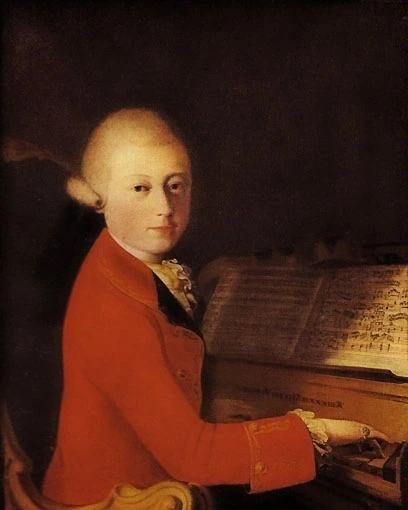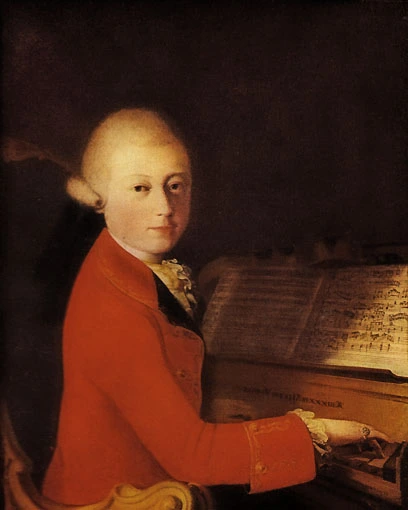Wunderkind (1756–1773)
Wolfgang Amadeus Mozart was born in Salzburg on 27 January 1756. He was one of seven children, of whom only two survived into adulthood. His father, Leopold Mozart, served as a musician to the Prince-Archbishop of Salzburg, first as a violinist in the Prince-Archbishop's Court Ensemble, and then as court composer from 1757. Wolfgang's mother, Anna Maria Pertl, came from a Salzburg family of civil servants.
Leopold Mozart began to foster his children's musical gifts when both Wolfgang Amadeus and his sister Maria Anna (who was five years Wolfgang's senior and known in the family as “Nannerl”) were both very young. The two “child prodigies” travelled with their father throughout their native Austria and beyond to Germany, France, Britain and Italy, demonstrating their talents at various European courts and aristocratic salons along the way. These concert tours added to the two young prodigies' reputations, as well as to the family bank accounts. Highlights of these early tours included playing to the Austrian Empress Maria Theresa at Schönbrunn in 1762, performing to Louis XV at Versailles in 1764, and giving a concert in London in front of George III, also in 1764.
Conversations with Eckermann
W. A. Mozart
Both Wolfgang Amadeus and his sister Maria Anna were considered child prodigies. In a time where extraordinary ability was increasingly put on show and measured, they were in good company. Other Wunderkinder born around the same time included the blind composer and pianist Maria Theresia Paradis, who was almost exactly the same age as Mozart, or the prodigious English talent Thomas Linley the Younger, who was also born in 1756 and with whom Mozart was personally acquainted. The two men came from similar family backgrounds, since Linley's father was also a musician. What set Mozart apart from these other child prodigies was his ability to develop his extraordinary talent even further as an adult.
Mozart's second visit to Paris
Shellac recordings (also known as 78s) of Mozart's early works are relatively rare. The paucity of recordings reflects the way listeners tended to access Mozart's work in the “78 era”, which ran roughly from the turn of the twentieth century until the mid-1950s. Record-buyers in this period were apparently less interested in oeuvre as a whole, preferring individual melodies instead. On top of that, shellac records have a playing time of three to five minutes per side, meaning they are by no means ideal for recordings of complete works. With this in mind, it is no surprise that the pieces that appear most often on 78s tend to be opera arias, because they are short enough to fit on one side of a shellac record.
W. A. Mozart




